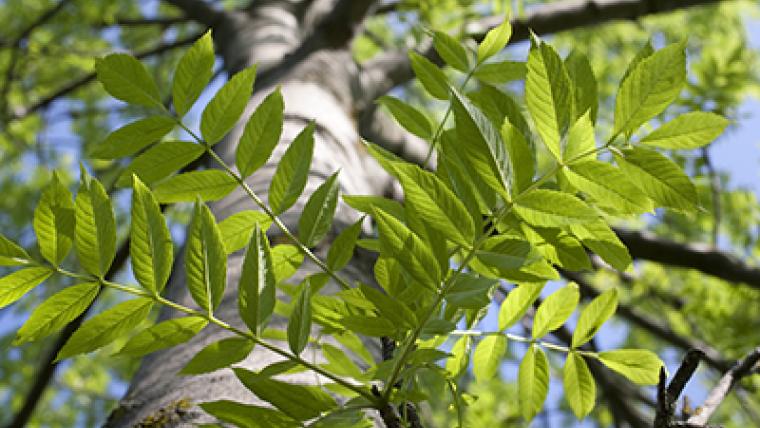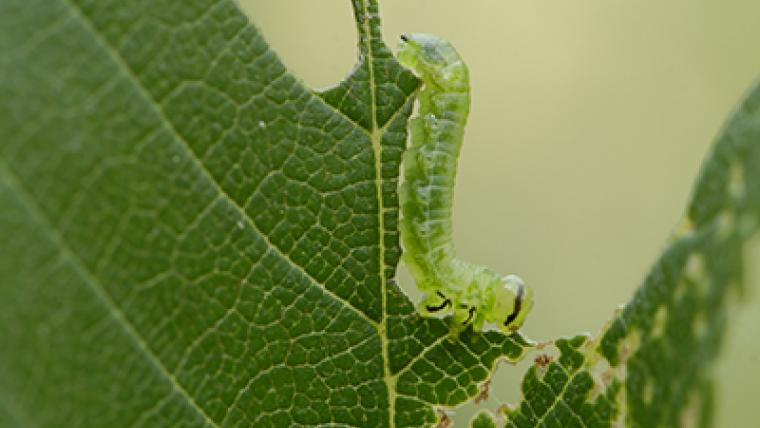Fire science between the covers
By Vanessa Greebe
July 11, 2018
With all of the tools, supplies and gear that fire managers need, the last thing you would expect them to take to a wildfire is a book.
But Steve Taylor’s little red book, Field Guide to the Canadian Forest Fire Behavior Prediction (FBP) System, has been part of fire manager and fire crew leaders’ toolkits for over 20 years.
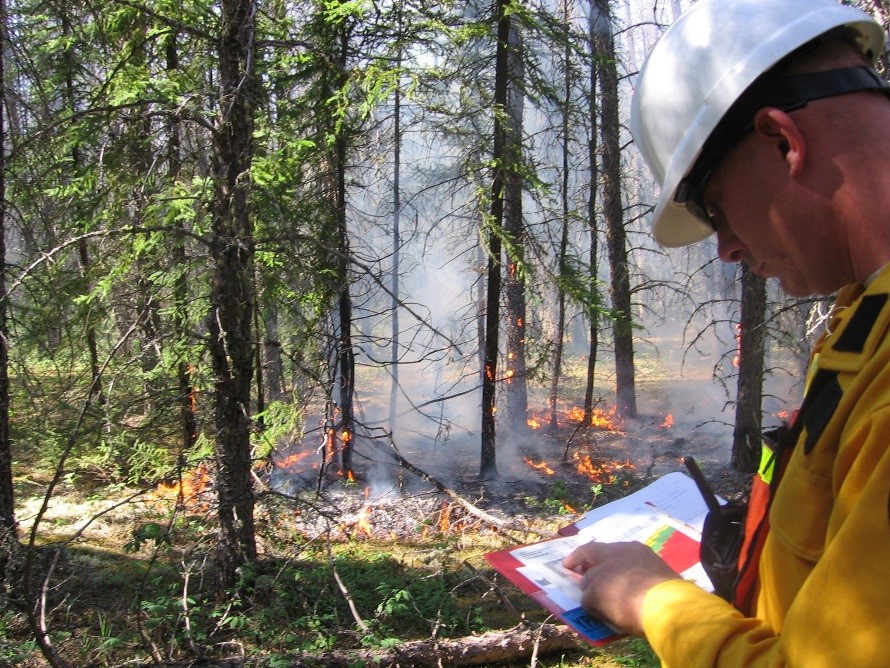
Larger image
Kris Johnson, Manager Fire Science and Planning, Government of Yukon, refers to the red book.
When there’s no Internet service
Tablets and smartphones don’t always work in remote wildfire areas. And if you’re bouncing around in a helicopter, it’s easy to refer quickly to the red book, a highly visual, reader-friendly tool with colour-coded graphs.
"It’s about helping to build what has come to be called situation awareness and determining the appropriate response in any fire situation," says Steve Taylor, a Victoria-based wildland fire research scientist with the Canadian Forest Service. “The red book has become a well-used fire behavior training tool in Canada and in other countries that use the Canadian FBP System .”
When seconds count
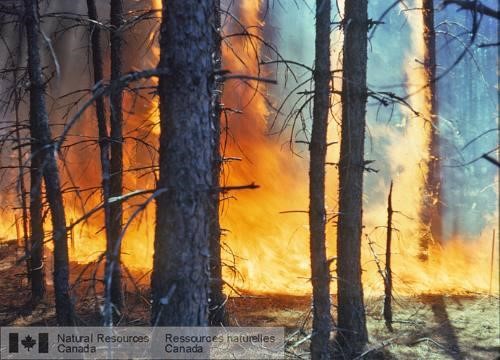
Larger image
Active surface fire in mature jack pine forest, Fire Intensity Class 3.
What’s burning, fuel flammability, wind, and topography are key drivers of fire behavior in the FBP System. Taylor and retired fire researcher Marty Alexander, have blended the complex series of mathematical equations that make up the system with their own knowledge and experience in the 120 page guide. For example, the most dangerous wildfires in Canada for wildland firefighters are not fuelled by trees but by grass. Grass fires may not look too threatening, but they can spread very quickly.
A close second for danger is a forest of black spruce, jack pine or lodge pole pine. Fire can move through a forest of black spruce or jackpine at speeds of more than 100 metres in a minute, not including the influence of long-range spotting.
When decisions must be made
By flipping to the red book chart on jackpine logging slash, fire managers can see how quickly a fire will spread, based on fuel moisture, projected wind speed and direction, and slope. Then they can plan what to do, where and when. Safety zones are planned. Escape routes are mapped.
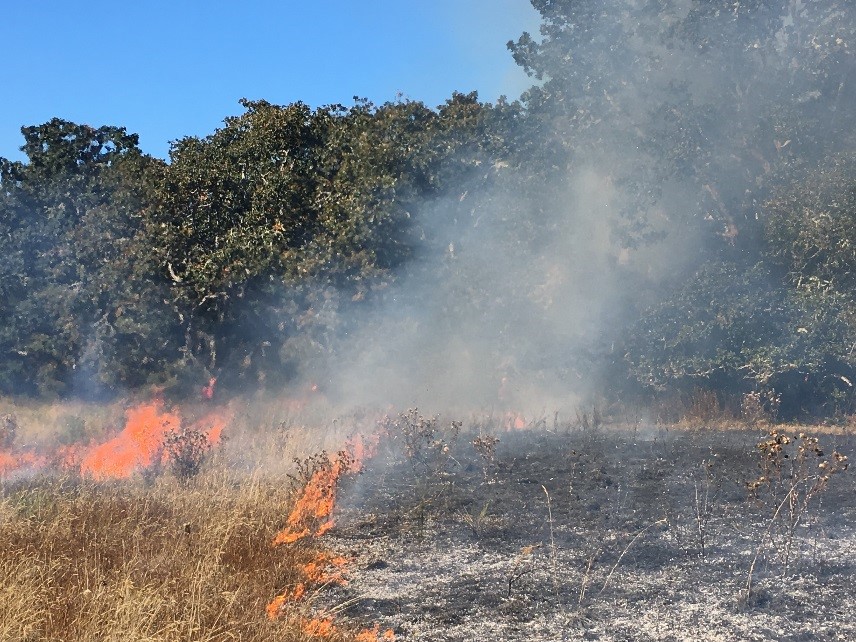
Larger image
Low-intensity surface fire (Fire Intensity Class 2) is used to restore a rare Garry oak meadow
Rocky Point, B.C.
The red book also indicates that the same conditions in a jackpine stand forest present even more extreme fire behaviour. Even small changes in wind can mean that a fire can transition from a surface to crown fire and the crew must be ready to evacuate or move to a safety zone.
The red book helps indicate important thresholds. For example, when a fire reaches a critical intensity on the ground and moves into the treetops, its spread rate and intensity increase threefold, largely due to higher winds.
Fire behavior dictates when it is safe to work, withdraw or alert the public that evacuation may be necessary. It also informs decisions on tactics, personnel, equipment and when it’s best to wait for conditions to improve. Throughout the day, crews monitor changes in fire behavior and modify their plans. Fire behavior is also critical to safe and effective use of prescribed fire in land management, and to safe use of modified response or “let burn” practises.
When lives are on the line
Thousands of wildland firefighters protect forests and communities in Canada every year. The science of fire behaviour is a key factor in firefighter and public safety. The study of fire behaviour and tools like the red book play a big role in making safe decisions.
Page details
- Date modified:
